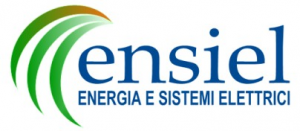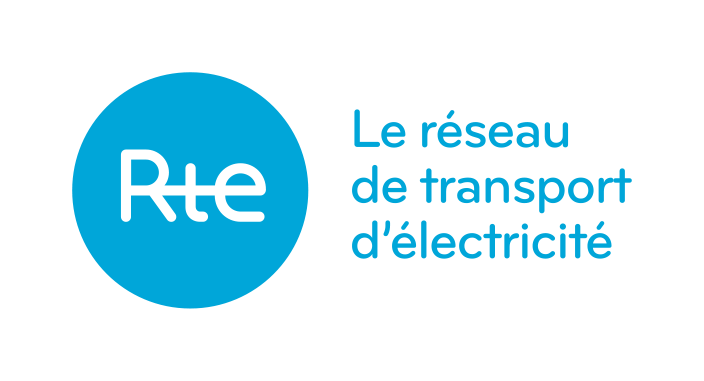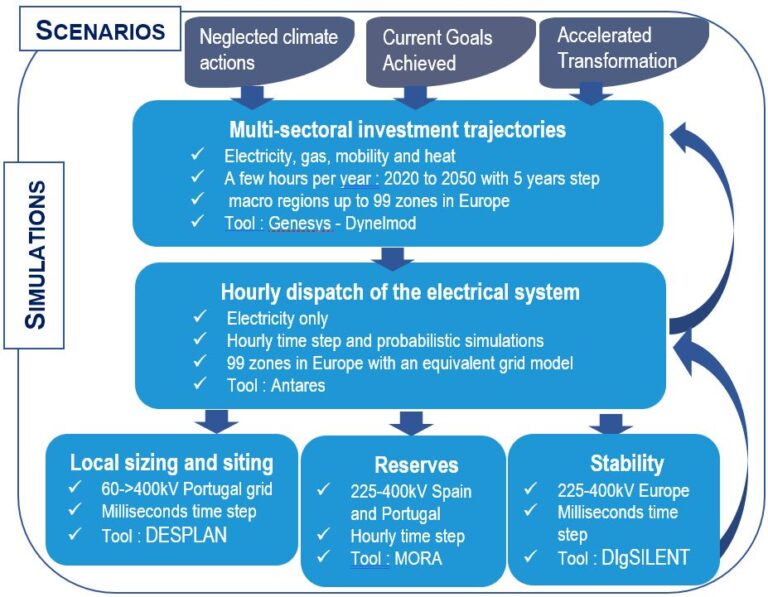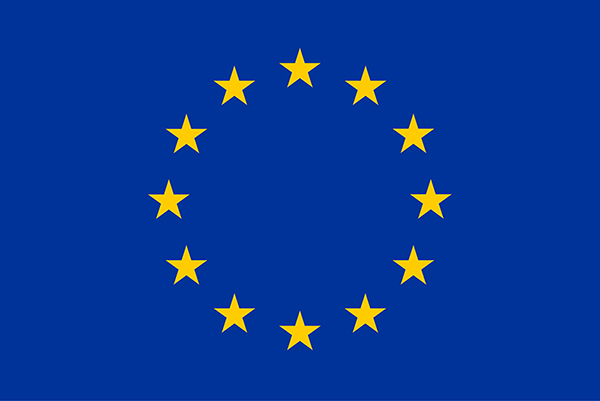WP1 – Optimal Mix of flexibilities
![]() Partners involved
Partners involved

![]()

![]()

![]()

![]()
WP Leader contact: Jens WEIBEZAHN, Technische Universität Berlin
![]() Context
Context
What is flexibility ?
Flexibility is understood as a power system’s ability to cope with variability and uncertainty in demand, generation and grid, over different timescales.
Why different interacting models?
Flexibility assessment covers a wide range of temporal and geographical issues that cannot all be addressed in one simulator due the mathematical complexity. Different simulators are thus necessary and interfaces have to be created in-between to model the various constraints.

![]() Objectives
Objectives
- Quantify the needs of flexibilities in different long-term scenarios
- Define the most adequate sources of flexibilities in the scenarios
- Create advanced tools and methodologies to analyse flexibility
![]() WP status (May 2021)
WP status (May 2021)
Based on the flexibility options identified for these scenarios and using the simulations results performed by RTE and EKC with ANTARES to optimize them at pan-European scale, task 1.4 assessed them in more details along three dimensions:
- Regarding cross-border provision of reserve, REN successfully applied its PSMORA model to the Continental South West (CSW) region to analyze security of supply criteria from the perspective of operational reserve assessment. The impact of short-term RES uncertainty (forecast error) on CSW system operation was assessed for the scenarios “Current Goals Achieved” 2030 and 2050, and the respective flexibility needs calculated, completed by sensitivity analysis. The 2030 scenario was also updated to include the Portuguese National Energy and Climate Plan (NECP) ambitions on RES installed capacity.
- As for the provision of stability services by flexibility options, ENSIEL studied future scenarios designed by WP partners for a portion of the European system, namely the Sicilian system, detailed up to the sub-transmission level. Large and small perturbation angle stability and voltage stability were assessed for most critical cases and the possibility to introduce flexibility options showed its effectiveness for both 2030 and 2050 scenarios. A sensitive analysis was carried out for a few scenarios showing critical conditions where the system stability cannot be guaranteed, and additional options were identified.
- With regard to the integrated analysis of different flexibility services to the power system, it includes capturing possible synergies across (A) the balancing of energy demand and supply, (B) the use of flexibility options for the provision of system-services and (C) the impact of the use of flexibility options on operation and planning of transmission and distribution grids. UDE performed a broad assessment of possible technical combinations and the current implementation of such setups. Furthermore, literature concerning modeling the consequences of such system setups was identified and discussed.
Three related deliverables will be released publicly by July 2021 to present these different results.
![]() Deliverables for download
Deliverables for download
- D1.1 European Long-Term Scenarios Description
- D1.2 Flexibility cost and operational data outlook
- D1.2 related data set
- D1.3 Optimal Mix of Flexibility
- D1.3 Appendix A Model, B Dataset and C Environmental Impact
- D1.4 WP1 Summary Report
- T1.4.1 – Optimal Sizing and Siting of Storage Facilities
- T1.4.2 Cross Border Resserve Exchange for improved flexibility and efficiency
- T1.4.3 Stability Aspects
- T1.5 Synergies between flexibility services
- WP1 dataset



